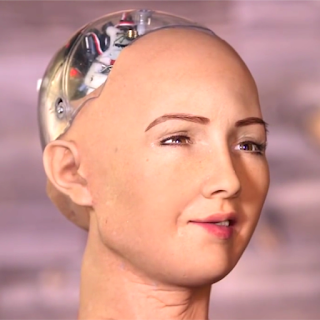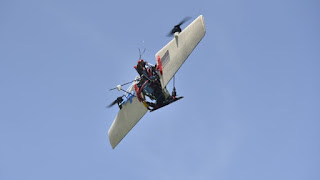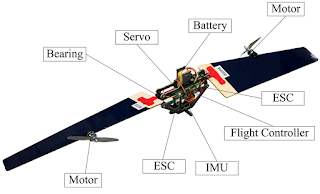Sophia, a human-like robot powered by artificial intelligence (AI), is a creation of the Hong Kong-based Hanson Robotics founded by Dr. David Hanson, who used to be a Disney Imagineer. On October 25, 2017, she became the a full citizen of Saudi Arabia, the first robot in the world to achieve such a status. Let’s know more about her...
 |
|
Sophia- First Robo-citizen of the
World
|
Sophia is a delicate looking woman with doe-brown eyes , long fluttery eyelashes and a shimmery metal cap of her head. Sophia has moving 3D-printed arms and they're working on giving her legs. Sophia has 62 facial and neck architectures and has cameras in her eyes that allow her to recognize faces and make eye contact. Her skin is made of a nanotech material that Hanson invented and dubbed "Frubber," that has a flesh-like bouncy texture mimicking human skin. The robot is designed in actress Audrey Hepburn’s image. According to Hanson Robotics, Sophia embodies Hepburn’s classic beauty: porcelain skin, a slender nose, high cheekbones, an intriguing smile, and deeply expressive eyes that seem to change color with the light.
Sophia represents both the physical embodiment of a computer animation and the social embodiment of A.I. Cameras embedded within her and a machine vision algorithm enable Sophia to detect faces and even remember interactions.She has the ability to walk i.e. she can move at speeds of up to 0.6 miles per hour and a slew of built-in gestures give her an additional means for social interaction. Her algorithms are set in such a way that she will get smarter in her dealings with humans over time, Hanson said. He hopes that a little public exposure will break down the social barriers between us and them, and teach us a little bit about her and her kind.
Sophia was activated on April 19, 2015 and made her first public appearance at South by Southwest Festival (SXSW) in mid-March 2016 in Austin, Texas, United States. She is able to display more than 62 facial expressions.
Sophia
has her own website
and has made numerous media appearances. Sophia is a highly
sought-after speaker in business and showed her prowess and great
potential across many industries. She has met face-to-face with key
decision makers in banking, insurance, auto manufacturing, property
development, media, and entertainment. In addition, she has appeared
onstage as a panel member and presenter in high-level conferences,
covering how robotics and artificial intelligence will become a
prevalent part of people’s lives. Her reputation extends beyond
business into the global social arena. She was named the world’s
first United Nation Innovation Champion by United Nations Development
Program (UNDP) and will have an official role in working with UNDP to
promote sustainable development and safeguard human rights and
equality.
The
two-year-old robot has become a media sensation after having appeared
in various conferences around the world including a meeting of the
U.N. Economic and Social Council (ECOSOC). She has given numerous
media interviews as well, and even graced the cover of one of the top
fashion magazines. Sophia's popularity proves that if the robot
revolution does happen, not only our job but our existence will also
be at risk. Among the feared consequences of the rise of the robots
is the growing impact they will have on human jobs and economies.
Decades of automation and robotisation have already revolutionised
the industrial sector, raising productivity but cutting some jobs.
And
now automation and AI are expanding rapidly into other sectors, with
studies indicating that up to 85 percent of jobs in developing
countries could be at risk. The more realistic they become, the more
chances they have to replace humans in fashion and beauty industries:
think endless possibilities of customization..
Sophia
is an evolving genius machine. Beyond AI, she has human values such
as Creativity, empathy, and compassion. Her incredible human
likeness, expressiveness, and remarkable story as an awakening robot
over time makes her a fascinating front-page technology story. She is
a real, live electronic girl. Lets all help her to realize her dream
of becoming an awakening machine. While Sophia has some impressive
capabilities, she does not yet have consciousness, but Hanson
said he expected that fully sentient machines could emerge within a
few years.
Bottom
line: There’s no doubt that AI technologies provide humans with
better services. Its gud when robots become our friends, but what if,
they don’t!? This is the most serious thought we must ponder
about...







